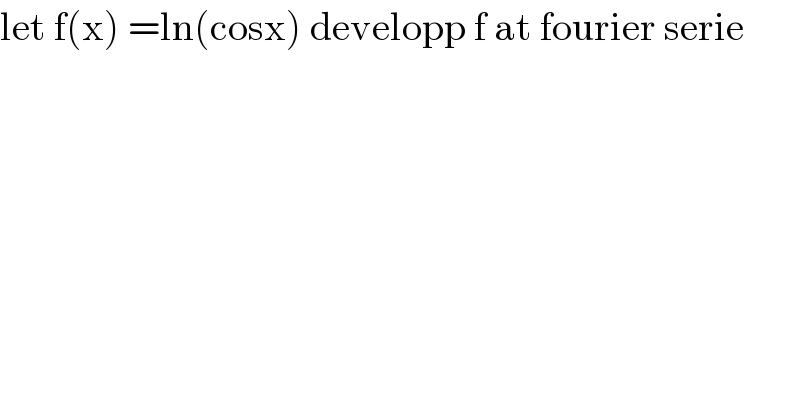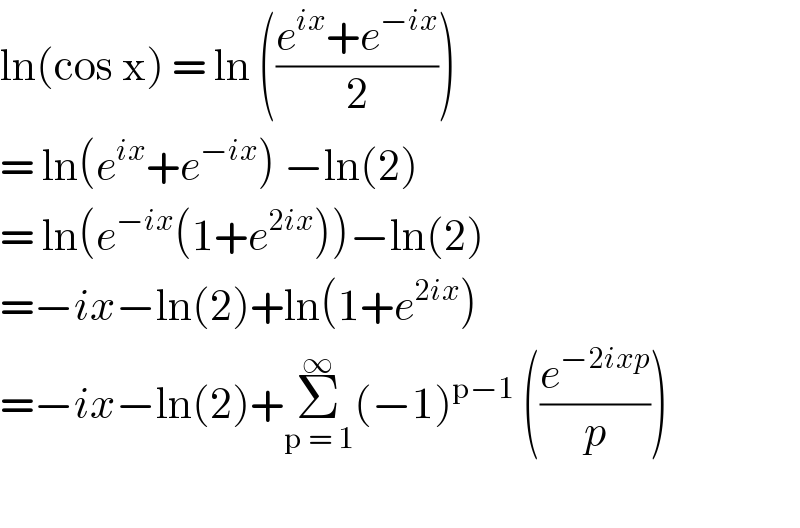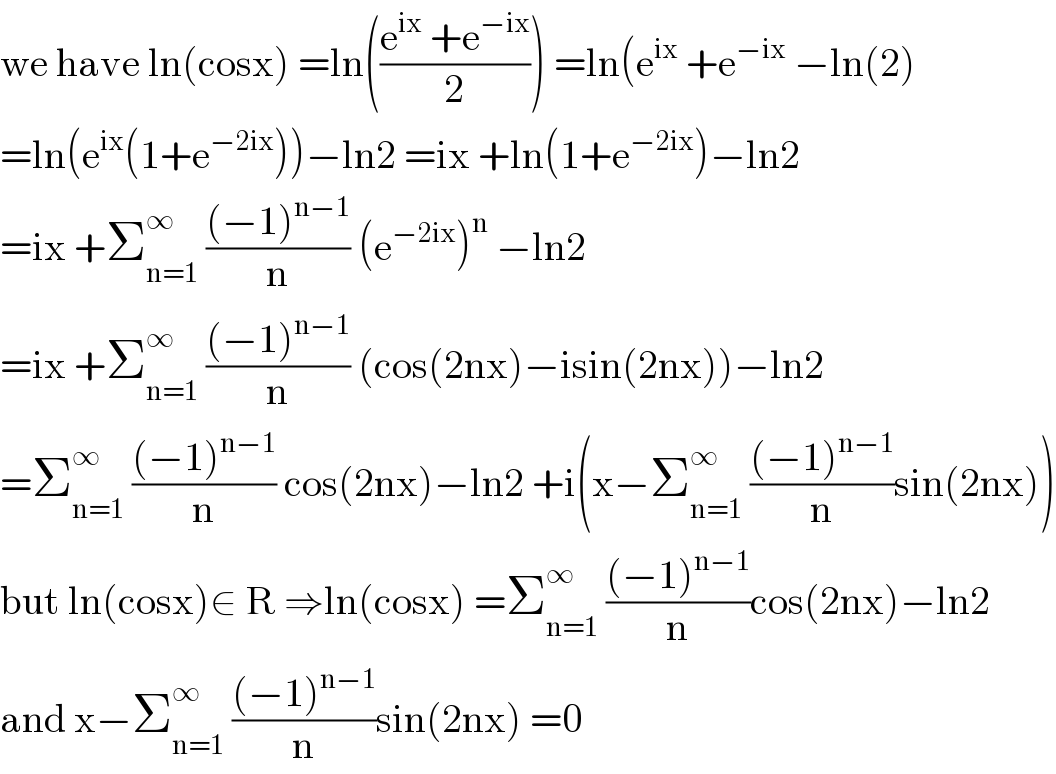
Question and Answers Forum
Previous in Relation and Functions Next in Relation and Functions
Question Number 96194 by mathmax by abdo last updated on 30/May/20

Answered by john santu last updated on 30/May/20

Answered by mathmax by abdo last updated on 30/May/20

